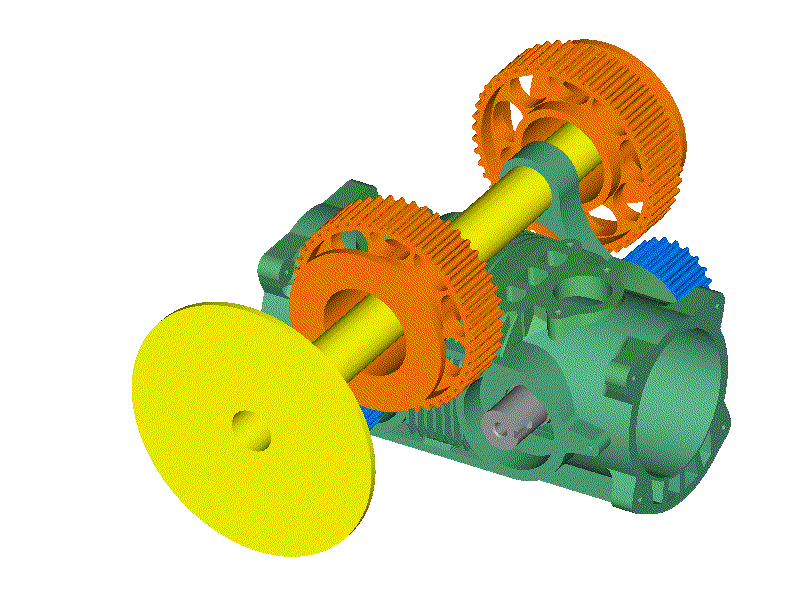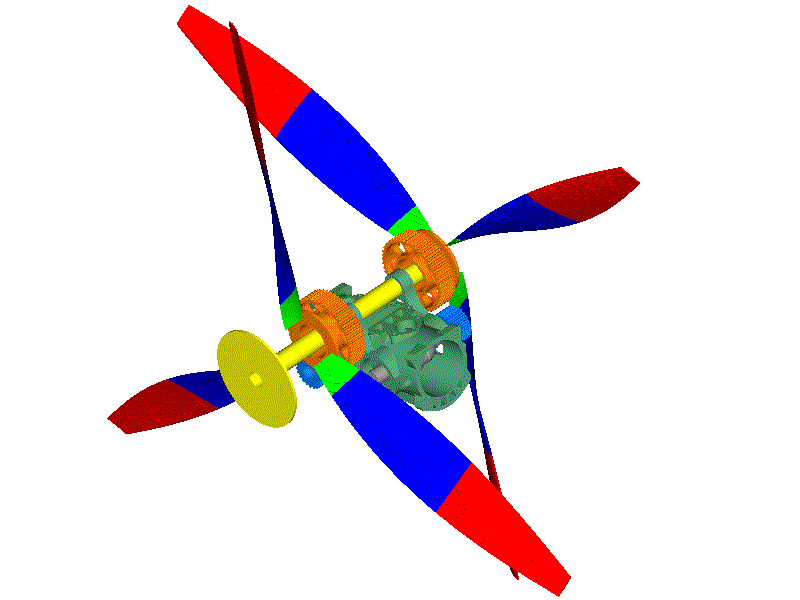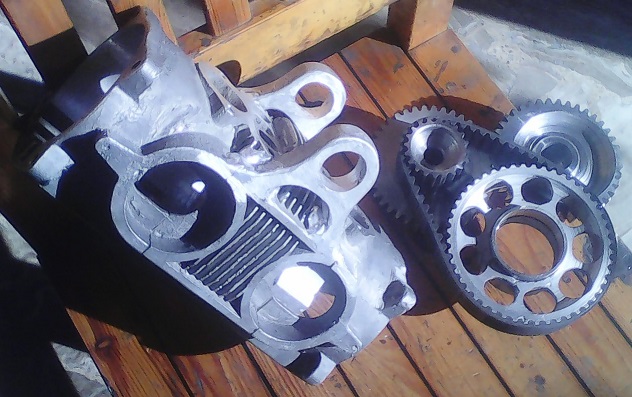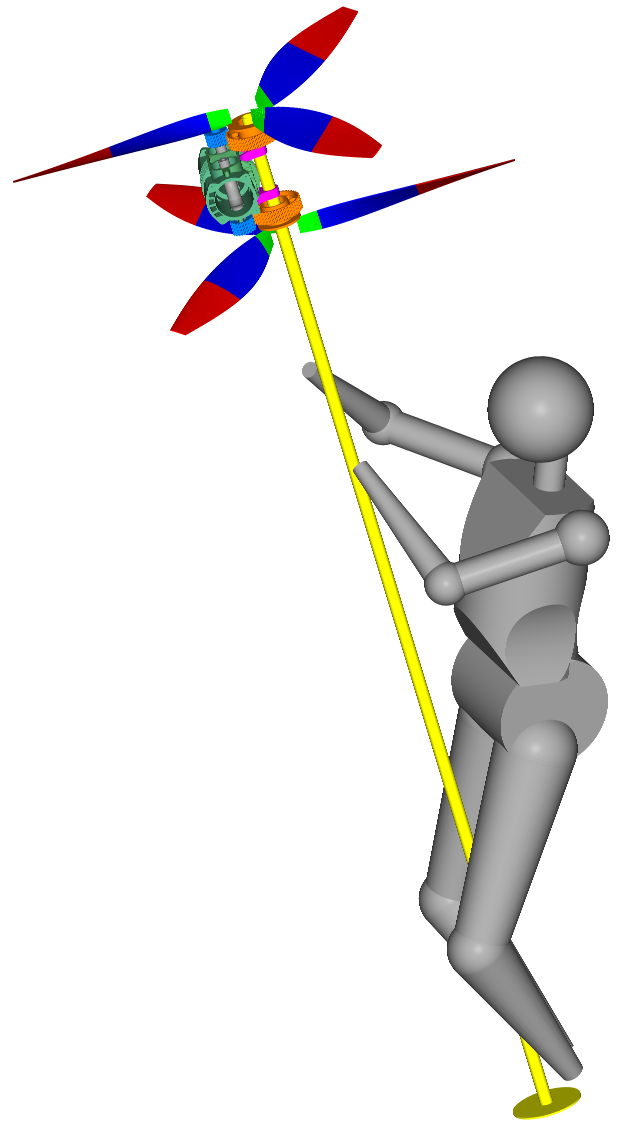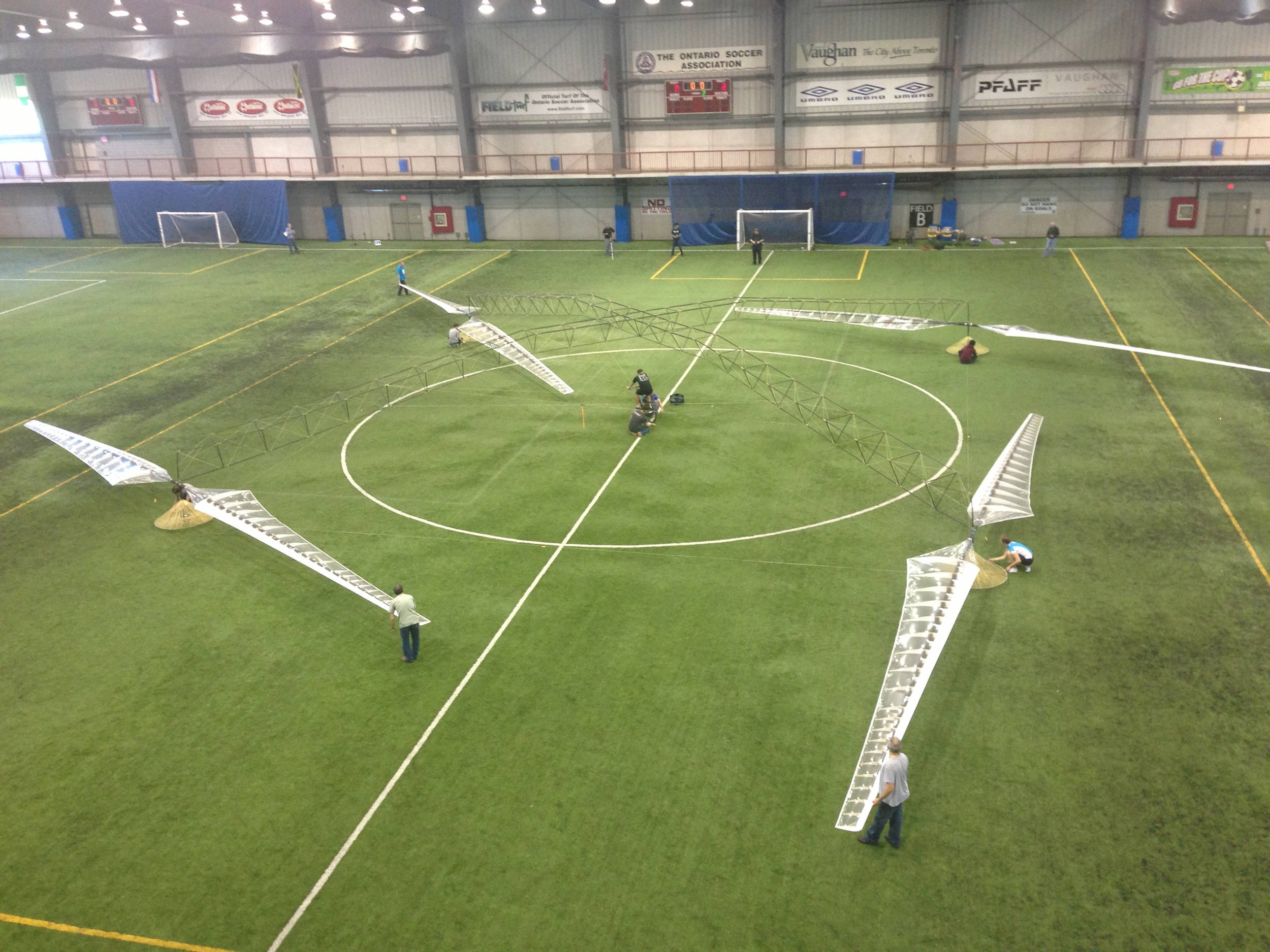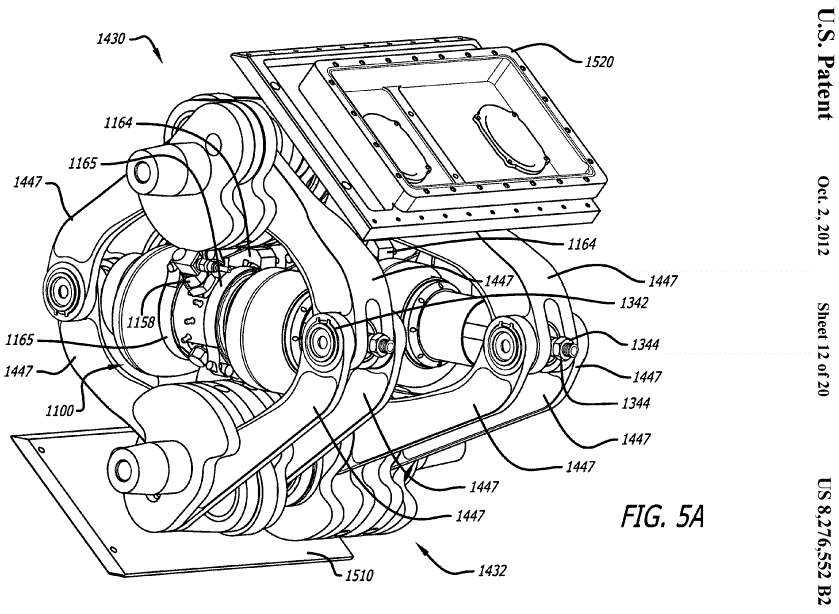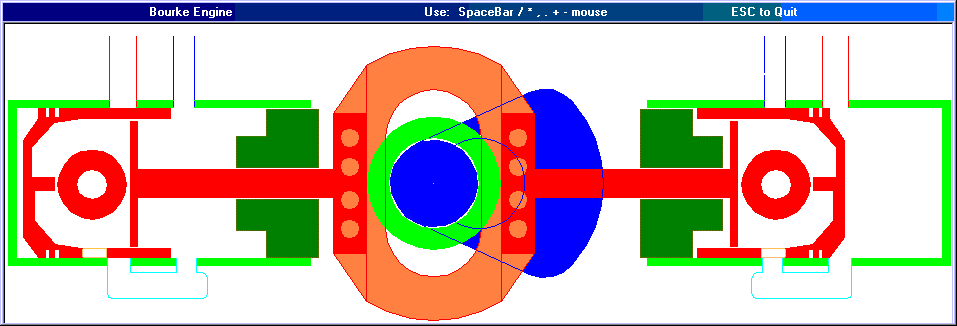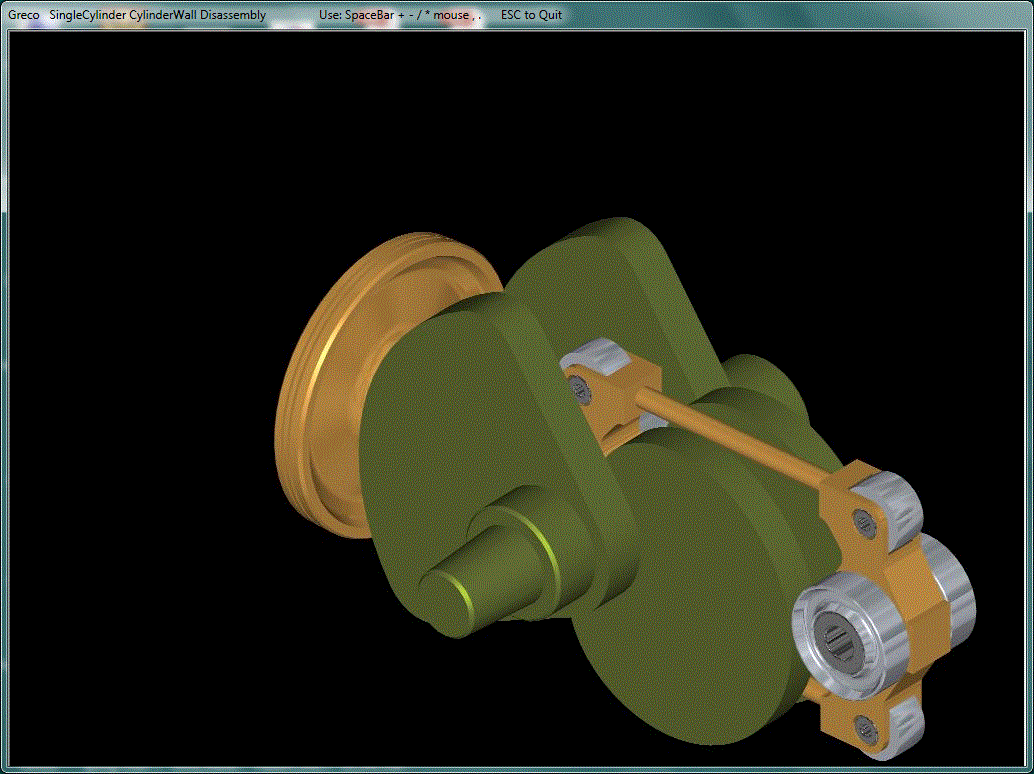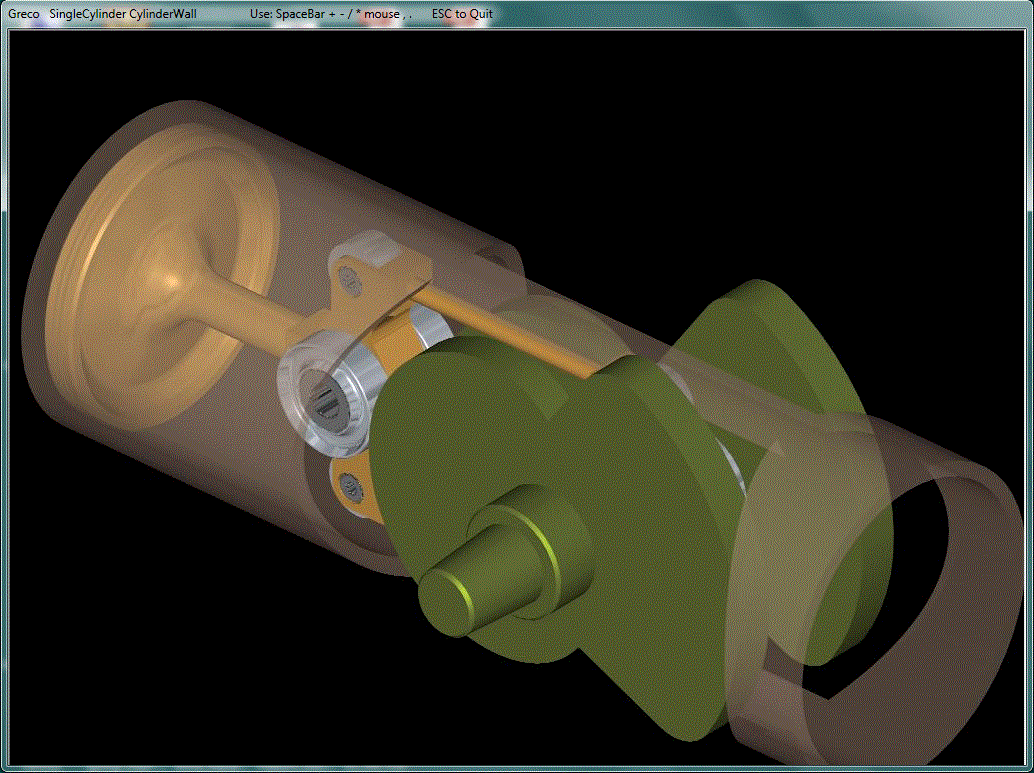Hello Gruntguru.
Mayman:
“But the pilot has to be on top. So the thing is literally dynamically unstable. Inherently unstable. And it has to be flown by computer.”
Gruntguru:
“Nonsense. . . Although somewhat non intuitive the situation. . .”.
For most people the situation is “heavily non-intuitive”.
Despite his long flying (and manufacturing) experience, Mayman can’t get it.
So let me help with a drawing:
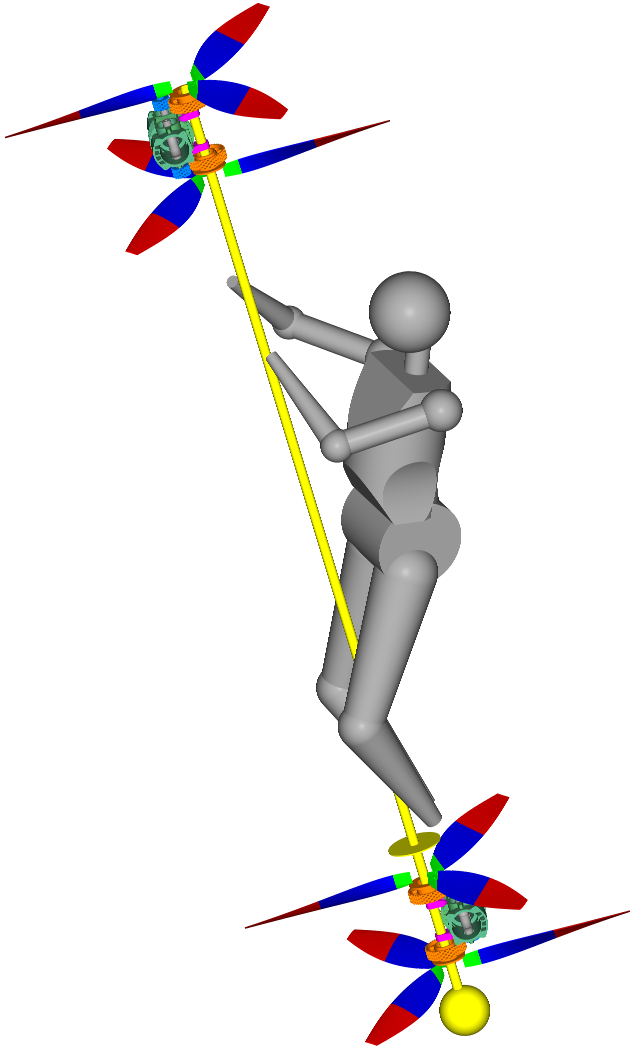
It is the “Broom Flyer” of a previous post modified by adding another OPRE Tilting propulsion unit at the bottom of the (yellow) pipe.
Suppose for a moment that the pilot is aerodynamically “transparent”.
Case 1: upper engine running, lower engine stopped.
Case 2: lower engine running, upper engine stopped.
In either case the pilot feels the same, and controls his flight the same way.
The force from the spinning propellers is along the yellow pipe in both cases.
In the one case the power unit is above the pilot, in the other case the power unit is below the pilot.
But the pilot is not aerodynamically “transparent”, which brings a significant difference of the two cases.
With the running engine above the pilot (i.e. with the pilot inside the downstream of the propellers), he has not only “weight displacement control”, but he has also aerodynamic control over his flight: his head and limbs act as flaps / ailerons / fins: deflecting a part of the downwash, they receiving reaction forces which give full control over the flight (yaw, pitch and roll).
With the running engine under the pilot (say, as in Zapata’s Jetpack) the pilot at take-off, at landing, at hovering and at low / medium speeds is based exclusively on “weight displacement” to control his flight. And this is not a full control.
Hello Rodak
This photo shows a windsurfer:
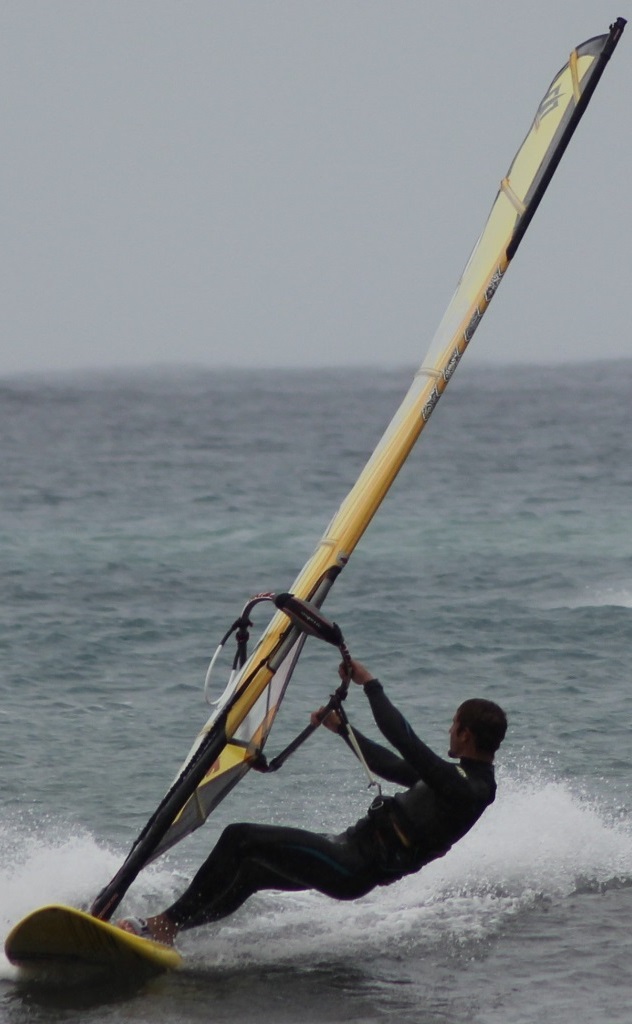
From Wikipedia:
“In 1948, 20-year-old Newman Darby was the first to conceive the idea of using a handheld sail and rig mounted on a universal joint so that he could control his small catamaran—the first rudderless sailboard ever built that allowed a person to steer by shifting his or her weight in order to tilt the sail fore and aft.”
Doesn’t it remind the way the pilot of the Broom_Flyer controls his flight?
Thanks
Manolis Pattakos

